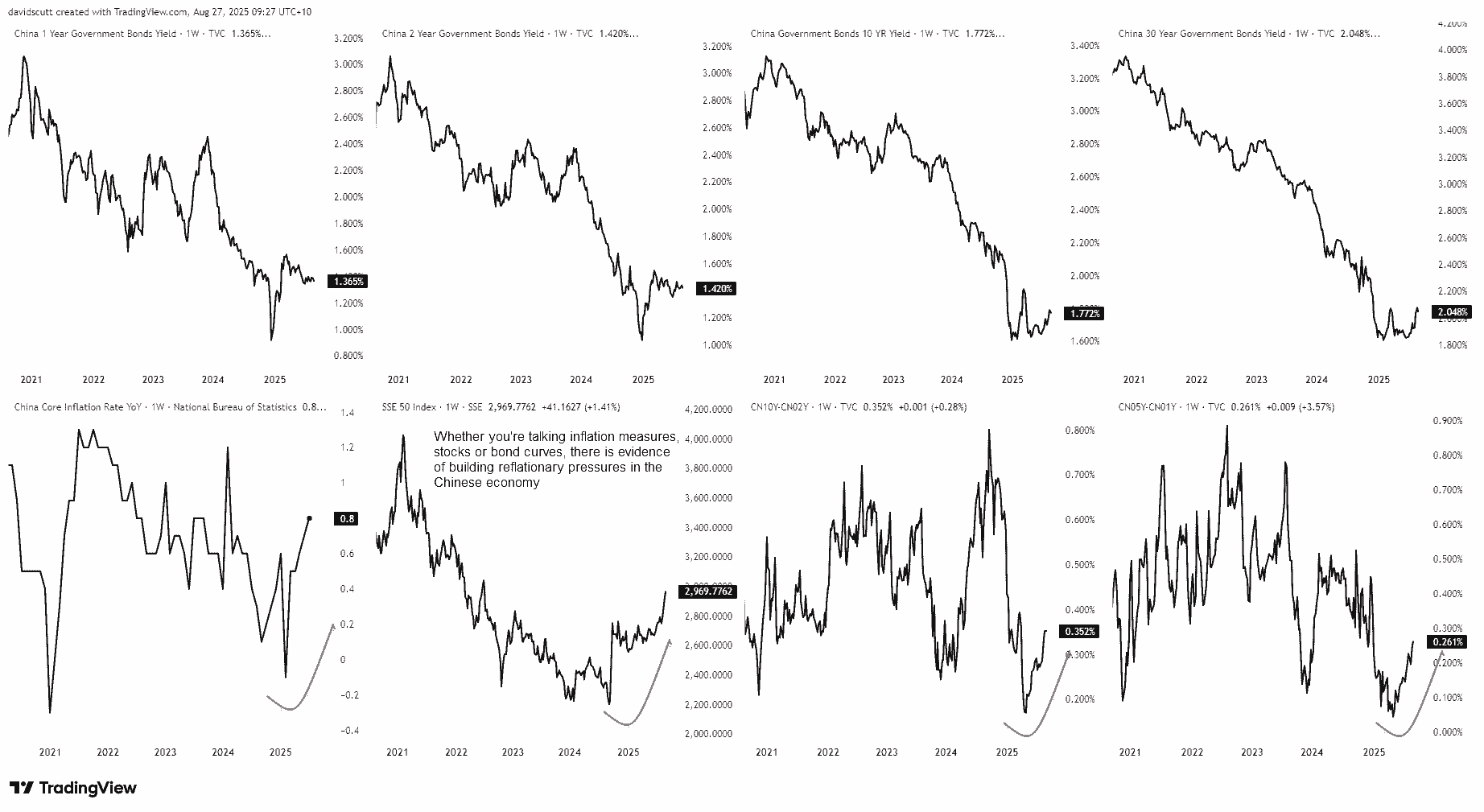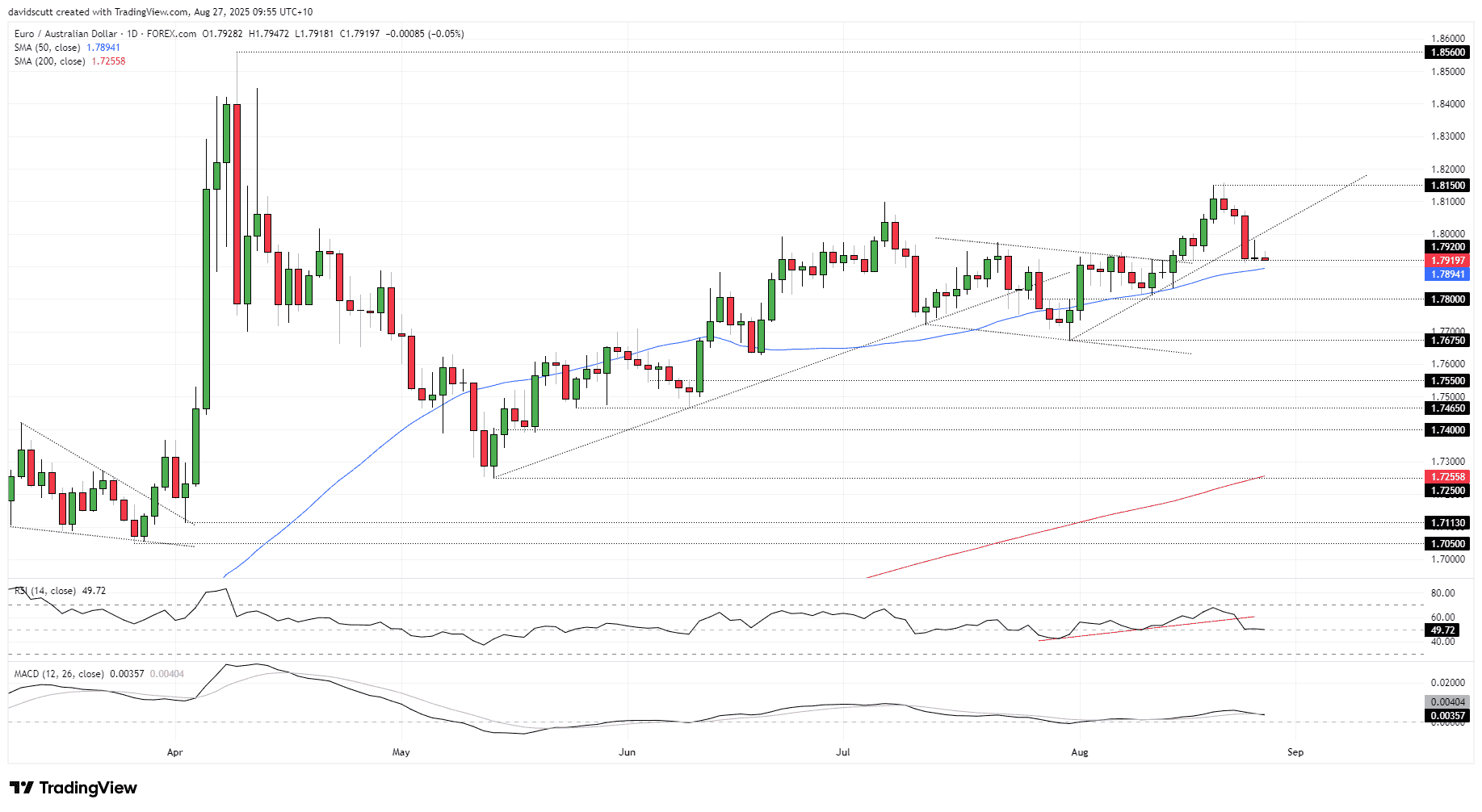- Trump threatens tariffs, chip curbs against Europe
- France and U.K. face renewed fiscal concerns
- China inflation, stocks and bonds hint at reflation
- , setups tilt bearish on contrasts
Summary
Proposed tariffs and chip restrictions from the Trump administration aimed at countering Europe’s digital services taxes are weighing on sentiment towards the euro. At the same time, fiscal turmoil is flaring across Europe and the U.K., with France unable to pass budget legislation and U.K. gilts selling off on renewed concerns over fiscal sustainability.
In contrast, China’s outlook is improving, with core inflation at cycle highs, equities breaking to multi-year peaks and the bond curve bear-steepening. Together, these forces point to a potential reflationary phase in China that could underpin the Australian dollar, creating a bearish backdrop for both EUR/AUD and GBP/AUD.

Source: TradingView
EUR/AUD: Momentum turning as bears circle 1.7920
Having broken uptrend support and with momentum indicators swinging quickly towards bearish territory, the ducks look to be lining up for downside in EUR/AUD. That’s even before you consider strengthening fundamental headwinds posed by potential U.S. sanctions on select E.U. nations and increasing reflationary signals from the Chinese economy, which would normally assist AUD strength.

Source: TradingView
Right now, the pair finds itself perched above 1.7920, a level that’s provided both support and resistance in recent weeks. Should we see continued selling following the break of the July 31 uptrend, it would create a setup where shorts could be established beneath 1.7920 with a stop above for protection.
The 50DMA provides an early hurdle for the trade, given the price bounced from there on the last three occasions. If that were to occur again, traders could consider nixing the trade. However, if the price can clear and hold beneath the 50DMA, it would open the door for a run towards minor support at 1.7800 or the July 31 swing low of 1.7675.
Momentum indicators have shifted to neutral and look like they may turn outright bearish shortly. RSI (14) has broken its uptrend and now sits bang on 50. MACD is also about to stage a bearish crossover, although it remains marginally in positive territory. Combined, the bias is now neutral to slightly bearish, favouring selling rallies.
GBP/AUD: Fiscal doubts and fading momentum tilt risks lower
Chinese reflation hopes have combined with renewed concerns over the U.K. fiscal trajectory to generate an interesting short setup from a purely fundamental perspective in GBP/AUD. The technicals are also supportive given where the pair sits on the charts.

Source: TradingView
If GBP/AUD breaks support at 2.0750 and holds there, shorts could be established with a stop above the level for protection. The 50-day moving average provides an early hurdle, so consider squaring the position if the price cannot meaningfully push beyond it. But if it can, 2.0600 or 2.0450 screen as appropriate trade targets.
Even though momentum indicators are neutral overall, it’s clear bullish momentum is weakening fast. The price action over the past week also makes for a compelling short case, with the tombstone doji of August 20 followed by a break of the August 7 uptrend and an extension of the bearish move down to 2.0750.
Australia inflation data poses little threat
While there is second-tier economic data released in Australia on Wednesday in the form of the monthly inflation indicator, the first month of the quarter tends to be dominated by goods prices, making the overall signal for RBA policymakers hard to trust when evaluating broader inflation trends. As such, it tends to have very limited market impact. Elsewhere, the calendar in Europe is extremely quiet, creating an environment where sentiment may be the dominant driver.
